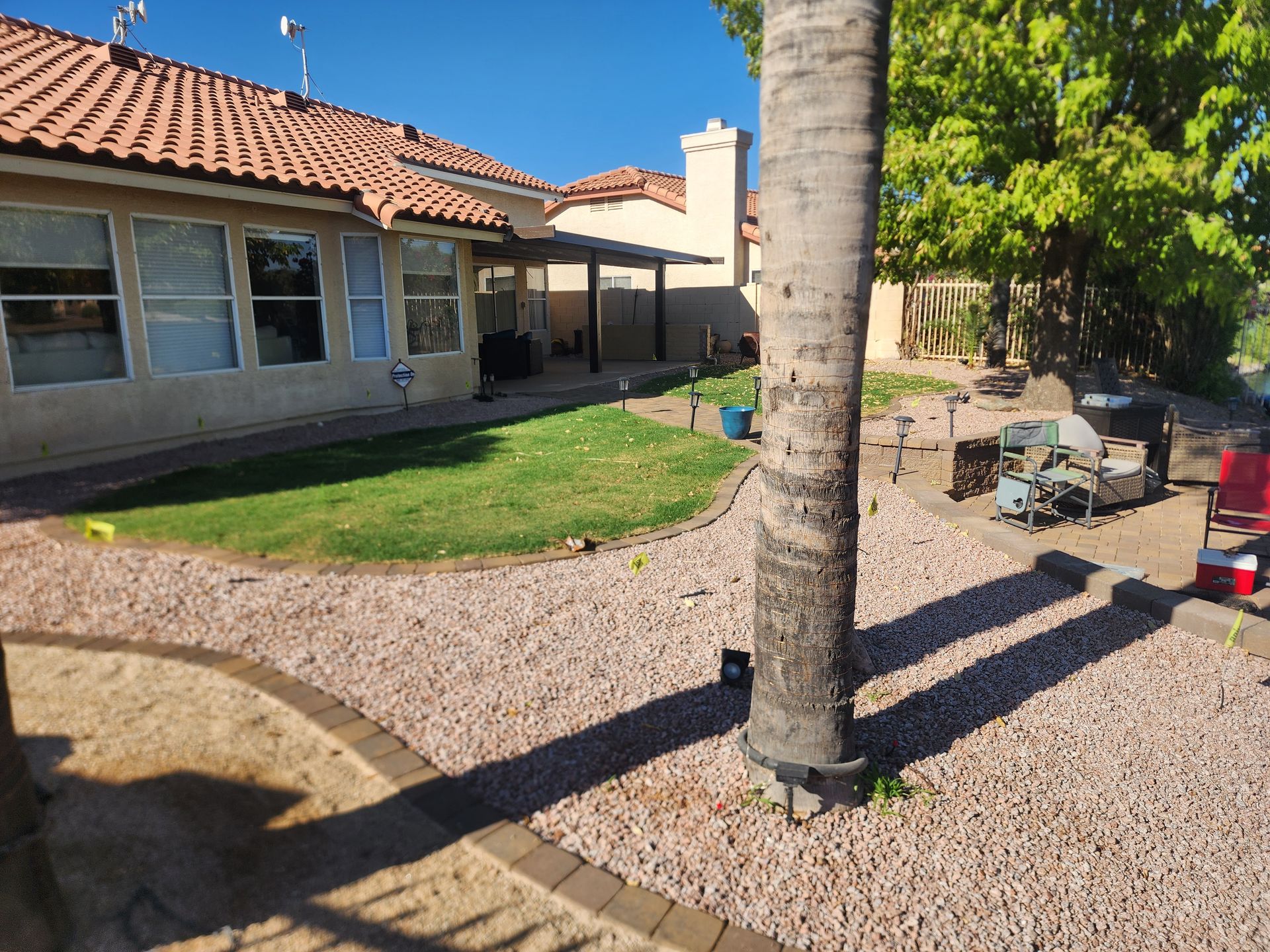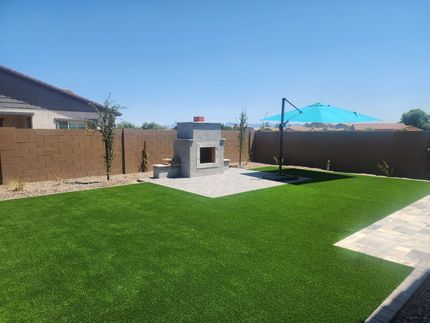Introduction
Queen Creek, Arizona, a charming town nestled in the southeastern part of the Phoenix metropolitan area, is renowned for its stunning desert landscapes and vibrant community. However, the arid climate of Queen Creek plays a pivotal role in determining landscape choices for homeowners and landscapers alike. Understanding how climate affects landscaping decisions can significantly enhance both aesthetic appeal and ecological viability. In this comprehensive article, we will delve into the nuances of climate and its influence on landscaping in Queen Creek. We’ll explore various aspects from plant selection to irrigation practices, all while highlighting local expertise offered by professionals like Blossom & Oak Landscaping.
How Climate Affects Landscape Choices in Queen Creek, AZ
Queen Creek experiences a semi-arid climate characterized by hot summers and mild winters. The average summer temperatures can soar above 100°F while winter nights may drop to around 40°F. This distinctive climate shapes every facet of landscaping choices ranging from plant selection to water conservation techniques.
1. Understanding Queen Creek’s Climate
1.1 Temperature Fluctuations Throughout the Year
The temperature variations throughout the year significantly impact what types of plants can thrive. During summer months, extreme heat necessitates drought-resistant plants that are adapted to survive with minimal water.
1.2 Rainfall Patterns in Queen Creek
Arizona is known for its low annual rainfall—averaging about 9 inches per year—most of which falls during the monsoon season in July and August. Understanding these patterns helps landscapers design landscapes that can capture and utilize rainwater effectively.
2. Native Plants vs. Exotic Species
2.1 The Case for Native Plants
Native plants are not only more resilient to local climatic conditions but also require less maintenance compared to exotic species. They are adapted to survive with minimal irrigation—a crucial factor given Queen Creek’s water scarcity.
2.2 Exotic Plants: Risks and Rewards
While exotic plants may offer unique aesthetics, they often require more water and care than native alternatives. It’s essential to weigh both the advantages and potential environmental impacts when considering exotic species.
3. Drought-Tolerant Landscaping Techniques
3.1 Xeriscaping for Water Conservation
Xeriscaping is a landscaping approach designed specifically for arid environments like Queen Creek, focusing on using drought-tolerant plants along with efficient irrigation methods.
3.2 Soil Amendments for Better Retention
Adding organic matter or mulch can help improve soil structure and moisture retention—critical factors for successful landscaping in dry climates.
4. Irrigation Systems: Adapting to Climate Needs
4.1 Types of Irrigation Systems Suitable for Arid Climates
- Drip Irrigation Soaker Hoses Smart Sprinkler Systems
Each system has its pros and cons depending on specific landscape needs.
4.2 Scheduling Watering Practices Efficiently
Watering early in the morning or late evening minimizes evaporation losses—a smart practice that aligns Blossom & Oak Landscaping well with Queen Creek's scorching daytime temperatures.
5. The Role of Microclimates in Landscaping Choices
Understanding microclimates within your property can make a significant difference when selecting plants or planning your landscape design:
5.1 Factors Influencing Microclimates
- Shade from trees Windbreaks Proximity to structures
These elements can create specific conditions ideal for various plant species.
6. Hardscape Elements: Designing with Climate in Mind
Hardscaping features such as patios, walkways, and retaining walls must also be carefully chosen based on climate considerations:


6.1 Material Selection for Durability
Choosing materials that withstand high temperatures without degrading is vital; options like concrete or stone perform well under these conditions.
6.2 Shading Structures
Incorporating shade structures can reduce heat accumulation around outdoor living spaces while providing comfort during scorching summer days.
7. Seasonal Color Variation: Planting Timing Matters!
Understanding seasonal plant behavior helps you select flowers that bloom at different times of the year:
7.1 Spring Blooms
Plants like Desert Marigold provide vibrant colors amidst the green landscape when spring arrives.
7.2 Winter Hardy Options
Selecting winter-blooming species ensures that your garden remains lively even during cooler months, maintaining aesthetic appeal year-round.
8. The Impact of Soil Quality on Plant Health
Soil quality greatly affects plant growth; thus understanding local soil characteristics is essential:
8.1 Testing Soil pH Levels
Regular soil tests allow homeowners to adjust their soil chemistry through amendments as needed, setting up their landscape for success.
8.2 Organic Matter Enrichment
Incorporating compost or other organic materials enhances nutrient availability while improving moisture retention properties—an essential aspect given Queen Creek's climate challenges.
9. Community Resources Available for Landscaping Support
Homeowners don’t have to navigate these choices alone! There are abundant resources available locally:
9.1 Local Landscaping Services—Blossom & Oak Landscaping
Professionals like Blossom & Oak Landscaping bring expertise tailored specifically toward landscapes suited for the unique challenges posed by Queen Creek’s climate conditions.
FAQs
1: What kinds of native plants thrive in Queen Creek?
Native plants such as desert marigold, agave species, and various cacti are well-suited due to their adaptability to dry conditions.
2: How do I conserve water while maintaining my landscape?
Implementing xeriscaping techniques along with drip irrigation systems can drastically reduce water usage without sacrificing aesthetic value.
3: Can I grow non-native flowers successfully?
Yes! However, it’s crucial to choose non-native flowers that are proven drought-tolerant if you want them to thrive without excessive watering.
4: Is it necessary to amend my soil?
Yes! Regular amendments can help enhance soil quality which directly impacts plant health—especially important in arid regions like Queen Creek!
5: What time should I water my garden?
Watering early mornings or late evenings minimizes evaporation losses which saves water while keeping your plants healthy!
6: Are there local gardening clubs or organizations?
Yes! Engaging with local gardening clubs provides support from fellow gardeners who share valuable insights based on experience navigating similar challenges!
Conclusion
Landscaping in Queen Creek presents unique opportunities shaped by its distinctive climate considerations—from scorching summers to sporadic rainfall patterns—all influencing sustainable design choices that prioritize resilience against environmental stressors while enhancing beauty throughout homes across this picturesque town! By investing time into understanding how climate affects landscape choices in Queen Creek, AZ, residents not only beautify their yards but contribute positively towards environmental sustainability efforts too! For those looking for professional assistance tailored specifically toward these needs— Blossom & Oak Landscaping stands ready as an expert partner committed towards achieving outstanding results aligned perfectly with local conditions!
This extensive article serves as a comprehensive guide detailing how climate affects landscaping choices specifically within the context of Queen Creek's unique environment—a valuable resource whether you're embarking on your first landscaping project or seeking ways to enhance existing outdoor spaces!